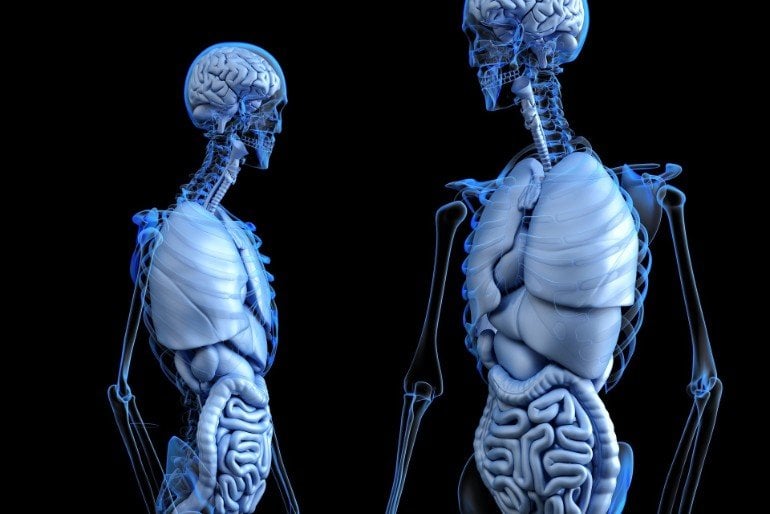Summary: Neural mapping of the enteric nervous system reveals how fetal neurons form during development. The process of neural development in the ENT follows different principal to the development of neurons in the brain.
Source: Karolinska Institute
Researchers at Karolinska Institutet have succeeded in mapping the neuron types comprising the enteric nervous system in the intestine of mice. The study, which is published today in the scientific journal Nature Neuroscience, also describes how the different neurons form during fetal development, a process that follows different principles to brain neurons.
Our approximately seven-metre long gastrointestinal (GI) tract has its own functionally distinct neurons. Since this enteric nervous system (ENS) operates autonomously, it is sometimes referred to as the “second” or “abdominal” brain. While the ENS controls muscle movement (peristalsis) in the gut and its fluid balance and blood flow, it also communicates with the immune system and microbiome. It therefore has a systemic affect on the body and is thought to be involved in a wide range of diseases. Some 30 percent of the population are estimated to live with permanent gastrointestinal complications.
Using single-cell sequencing, a method that enables scientists to functionally categorise and classify individual cells by determining which genes are active in them, researchers from Karolinska Institutet have now mapped the neurons that make up the mouse ENS. Roughly speaking, neuron function can be broken down into sensory, motor or interneuronal; now, the researchers have succeeded in describing subgroups of such nerve cells – in total, they have identified and classified twelve different kinds of ENS neuron, including subgroups of sensory neurons, some of which are activated by substances in the intestines and affect the immune system, while others are stimulated more mechanically.
The researchers also studied how GI tract neurons form during gestation, and found that the maturation process follows different principles to that of the central nervous system (CNS). In the CNS, the neurons mature from stem cells that are “pre-programmed” to form a certain type of neuron depending on their location, as different types of neuron are needed at different sites of the CNS. In the ENS, on the other hand, the same composition of neurons is needed along the entire length of the intestine. It is therefore unclear how the cells of the ENS “know” what to mature into. In this study, the researchers show that different neuronal types in the ENS are formed after the cells have matured into neurons and identify a transcription factor, Pbx3, that plays an important part in this transformational process.

“What we’ll be doing next is systematically activating the different neurons in the ENS in mice to study how the gastrointestinal functions are affected,” says the study’s last author Ulrika Marklund, researcher at the Department of Medical Biochemistry and Biophysics at Karolinska Institutet. “This will enable us to produce detailed functional knowledge about the different neurons. So, in the future, we’ll be able to figure out the part played by the neurons in different intestinal diseases and identify targets for new drugs.”
She continues: “Our new findings on the formation of the ENS will also pave the way for better methods of ‘producing’ specific enteric neurons. It’s conceivable that we might eventually have stem-cell therapies for curing or alleviating different intestinal diseases that involve the re-creation of ENS neurons. But we’re not there yet.”
Funding: The study was supported by grants from numerous bodies, including the Swedish Research Council, the Knut and Alice Wallenberg Foundation, the Swedish Society of Medicine, the Ruth and Richard Julin Foundation, the Ollie and Elof Ericsson Foundation, the Magnus Bergvall Foundation, the Swedish Brain Foundation and the Åke Wiberg Foundation.
About this neurodevelopment research news
Source: Karolinska Institute
Contact: Press Office – Karolinska Institute
Image: The image is in the public domain
Original Research: Closed access.
“Diversification of molecularly defined myenteric neuron classes revealed by single-cell RNA sequencing” by Khomgrit Morarach, Anastassia Mikhailova, Viktoria Knoflach, Fatima Memic, Rakesh Kumar, Wei Li, Patrik Ernfors & Ulrika Marklund. Nature Neuroscience
Abstract
Diversification of molecularly defined myenteric neuron classes revealed by single-cell RNA sequencing
Autonomous regulation of the intestine requires the combined activity of functionally distinct neurons of the enteric nervous system (ENS). However, the variety of enteric neuron types and how they emerge during development remain largely unknown. Here, we define a molecular taxonomy of 12 enteric neuron classes within the myenteric plexus of the mouse small intestine using single-cell RNA sequencing. We present cell–cell communication features and histochemical markers for motor neurons, sensory neurons and interneurons, together with transgenic tools for class-specific targeting. Transcriptome analysis of the embryonic ENS uncovers a novel principle of neuronal diversification, where two neuron classes arise through a binary neurogenic branching and all other identities emerge through subsequent postmitotic differentiation. We identify generic and class-specific transcriptional regulators and functionally connect Pbx3 to a postmitotic fate transition. Our results offer a conceptual and molecular resource for dissecting ENS circuits and predicting key regulators for directed differentiation of distinct enteric neuron classes.






